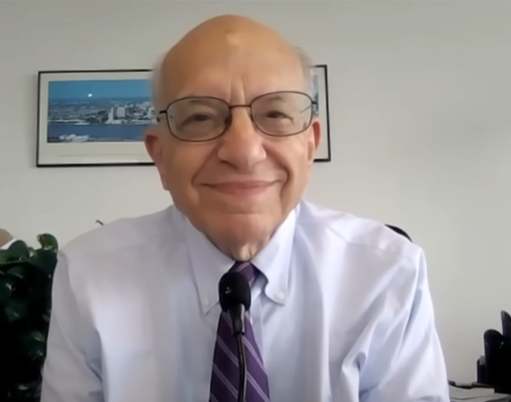Fed Chair Powell Has Room to Lower Rates:Wharton’s Jeremy Siegel says the Federal Reserve, led by Chair Jerome Powell, has room to lower interest rates as inflation outside of tariffs trends downward. He attributes the S&P 500’s rise above 6000 to easing trade tensions and believes markets can continue climbing if tariffs don’t escalate. Siegel also highlights the importance of maintaining trade deficits to support the U.S. dollar’s role as the global reserve currency and urges policymakers to focus on future economic realities rather than nostalgic protectionism.
Fed Chair Powell Has Room to Lower Rates
The S&P 500 has surged above the 6000 mark, a remarkable milestone signaling investor optimism despite lingering global trade tensions. If the index were to open where futures are trading, it would solidify this psychological threshold. Professor Jeremy Siegel, the renowned economist from the Wharton School and chief economist at WisdomTree, recently shared his views on this rally, tariff concerns, and the broader macroeconomic picture.
Professor Siegel has consistently voiced his opposition to tariffs. According to him, if tariffs from President Trump’s first term had remained in place, the S&P 500 might have been 2000 points higher. On the flip side, if tariffs had stayed as they were on April 2nd, the Dow could have been 8000 points lower. He turned bullish just three weeks ago after the initial meeting between Chinese and U.S. trade representatives (referred to as Xi’s team and Bessent) surprisingly went well, bringing tariff rates from 145% down to 30%.
He believes that the market can live with a 10% to 30% tariff on Chinese imports, despite the 50% tariffs on aluminum and steel. As long as tariffs don’t worsen from this point, Siegel sees no reason why markets can’t push to new highs. However, he acknowledges the ceiling on growth if trade tensions flare up again.
Encouraging signs from other trade fronts are also emerging. India has extended its trade negotiations, and renewed dialogue with China is underway. Siegel noted that President Trump has demonstrated more flexibility in his second term compared to the more aggressive stance seen earlier. He highlighted the reduction in visibility of trade hawks like Peter Navarro and the increased role of moderates like Bessent, reflecting a more measured approach.
According to Siegel, the recent softness in manufacturing and global trade cannot solely be blamed on trade deals like NAFTA or China joining the WTO. About 90% of U.S. manufacturing job losses since World War II occurred even before these events. He attributes much of the structural job shift to globalization and the natural evolution of the global economy. In his view, attempts to rewind to a 1950s-style economic model are unrealistic.
Siegel remains cautiously optimistic. He believes that even a 50% reduction in trade restrictions would positively impact the economy. It wouldn’t be a perfect resolution, but a meaningful improvement. Both countries could claim partial victory and return to “business as usual,” which would benefit global trade and markets.
He also touched upon the role of the U.S. as the world’s reserve currency. To maintain this status, the U.S. needs to run trade deficits to ensure that dollars flow abroad. A drive to eliminate all deficits would, ironically, hurt the U.S. in its strategic monetary position.
On the monetary policy front, Siegel is one of the more dovish voices. He sees potential for Federal Reserve Chair Jerome Powell to cut rates, especially if the trade situation stabilizes. Inflation data outside of tariff-related price pressures appears soft, and some downward trends are emerging. Siegel feels the Fed has room to act preemptively.
He expressed surprise at hawkish commentary from figures like Kevin Warsh, especially considering that Powell still has nine to ten months left in his term. Nonetheless, Siegel maintains that current conditions support a rate cut, and the Fed should seriously consider it in the upcoming months.
As the market celebrates the 6000 milestone on the S&P 500, the interplay of global trade dynamics and domestic monetary policy remains critical. With cautious optimism, investors may find support if geopolitical tensions ease and the Fed signals more accommodative policies.
Disclaimer:
This article is for informational purposes only and does not constitute financial advice. Market conditions can change rapidly, and investors should conduct their own research or consult a qualified financial advisor before making any investment decisions.

